


Plasma globes, also known as plasma lamps or Tesla globes, are decorative objects that produce fascinating light patterns.
A plasma globe consists of a transparent glass sphere filled with a noble gas or gas mixture (such as neon, argon or xenon) at low pressure. In the center of the sphere is an electrode, which often has a spherical or columnar structure and is connected to a high-voltage alternating current generator. A transformer or oscillator generates a high voltage, typically in the range of several kilovolts, which is applied to the central electrode to ionize the gas molecules in the sphere. This produces positively charged gas molecules and free electrons, which together form a plasma.
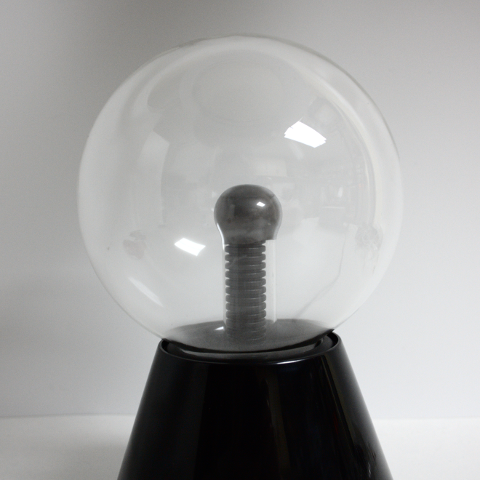
Colourful discharges occur in this plasma when the ionized gases emit light as they return to their ground state. The color of the light depends on the type of gas used. For example, neon produces a reddish light, argon a bluish light and xenon a violet light. The discharges can be controlled by touching the glass wall of the sphere. As the human body is conductive and provides a low-resistance connection to earth, this leads to the discharges from the plasma sphere being directed to the point at which the touch occurs.
The following spectrum was recorded by holding the light guide close to the glass sphere and directing the light discharge inside the sphere by touch so that mainly blue discharges occurred in front of the light guide. The spectrum then also shows mainly emission lines of xenon.
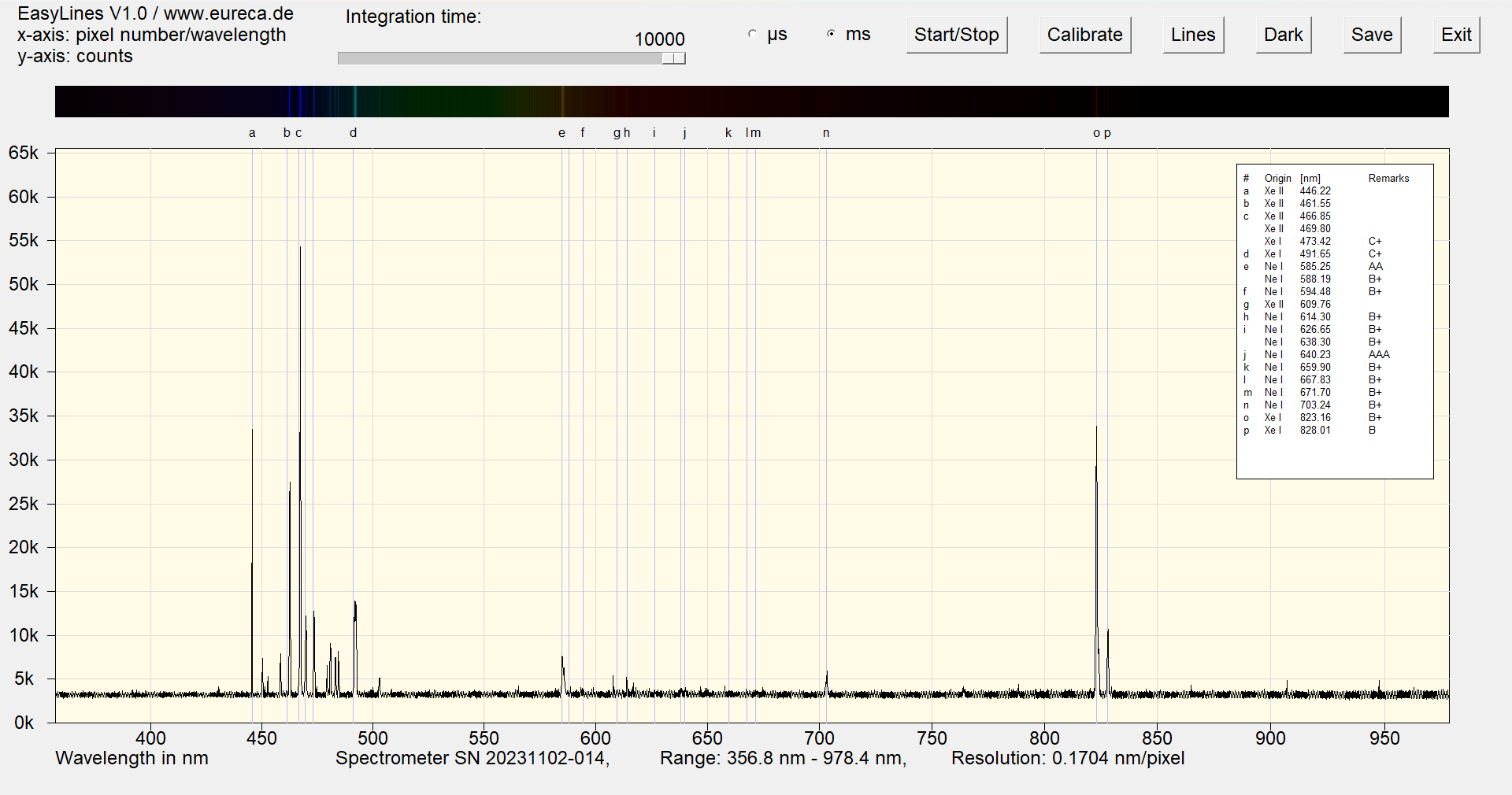
Spectrum of blue discharges of a classical plasma globe with inserted reference values ¹
If the plasma inside the sphere is controlled by touch so that mainly reddish discharges take place in front of the light guide, lines originating from neon can also be observed in the spectrum in addition to the xenon lines. In this plasma sphere, a mixture of xenon and neon was obviously used to fill the gas.
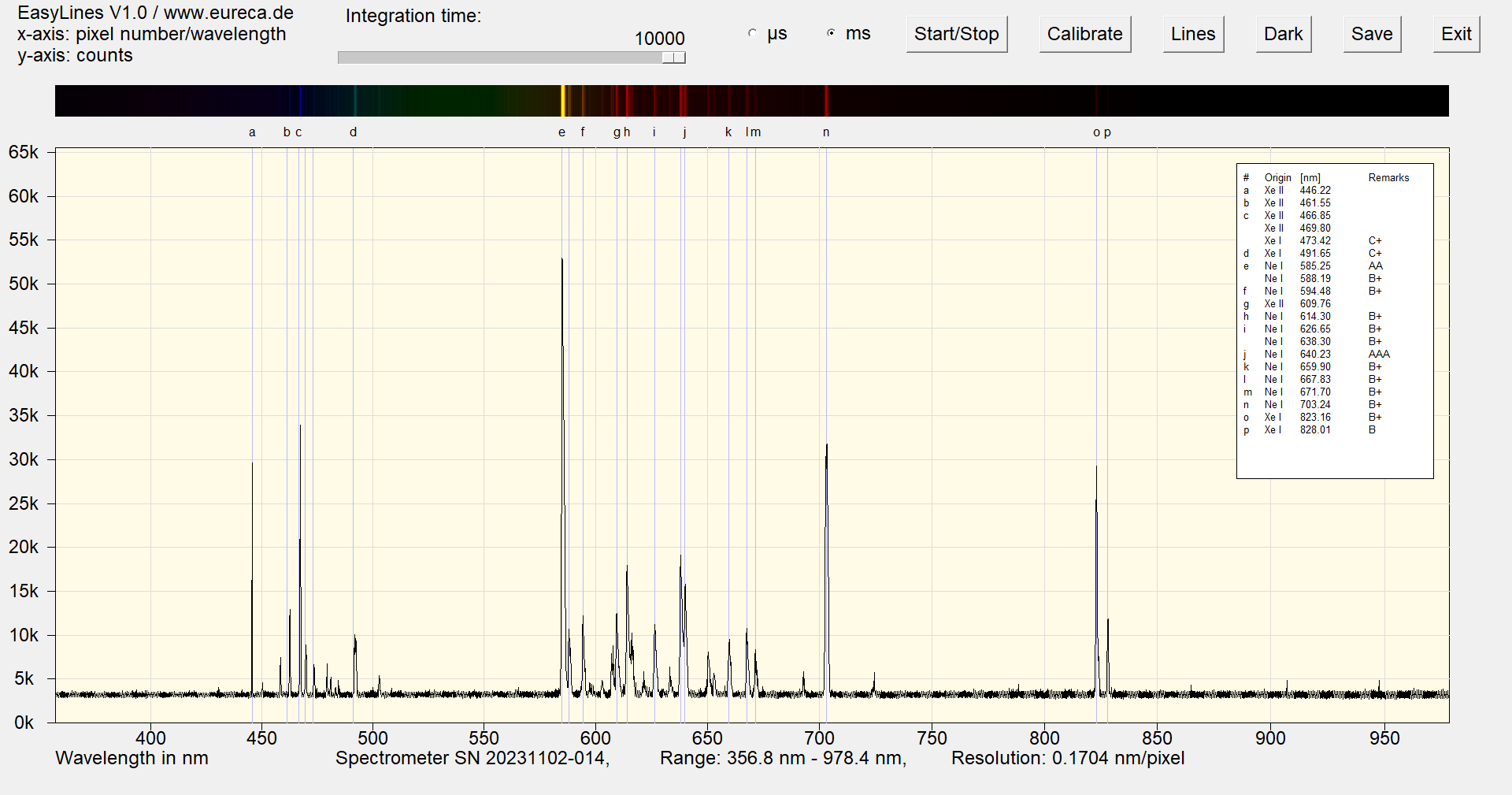
Spectrum of reddish discharges of a plasma globe with inserted reference values ¹
Plasma spheres are also available in other colors. Here is an example of a sphere with a greenish color. The recorded spectrum shows that the greenish color is not produced by special gases but by a phosphor coating on the inside of the sphere. On closer inspection, this coating can also be recognized as a granular milky layer and small, bright greenish phosphorus crumbs can also be found. The spectrum also shows that the filling of this type of sphere also consists of xenon and neon.
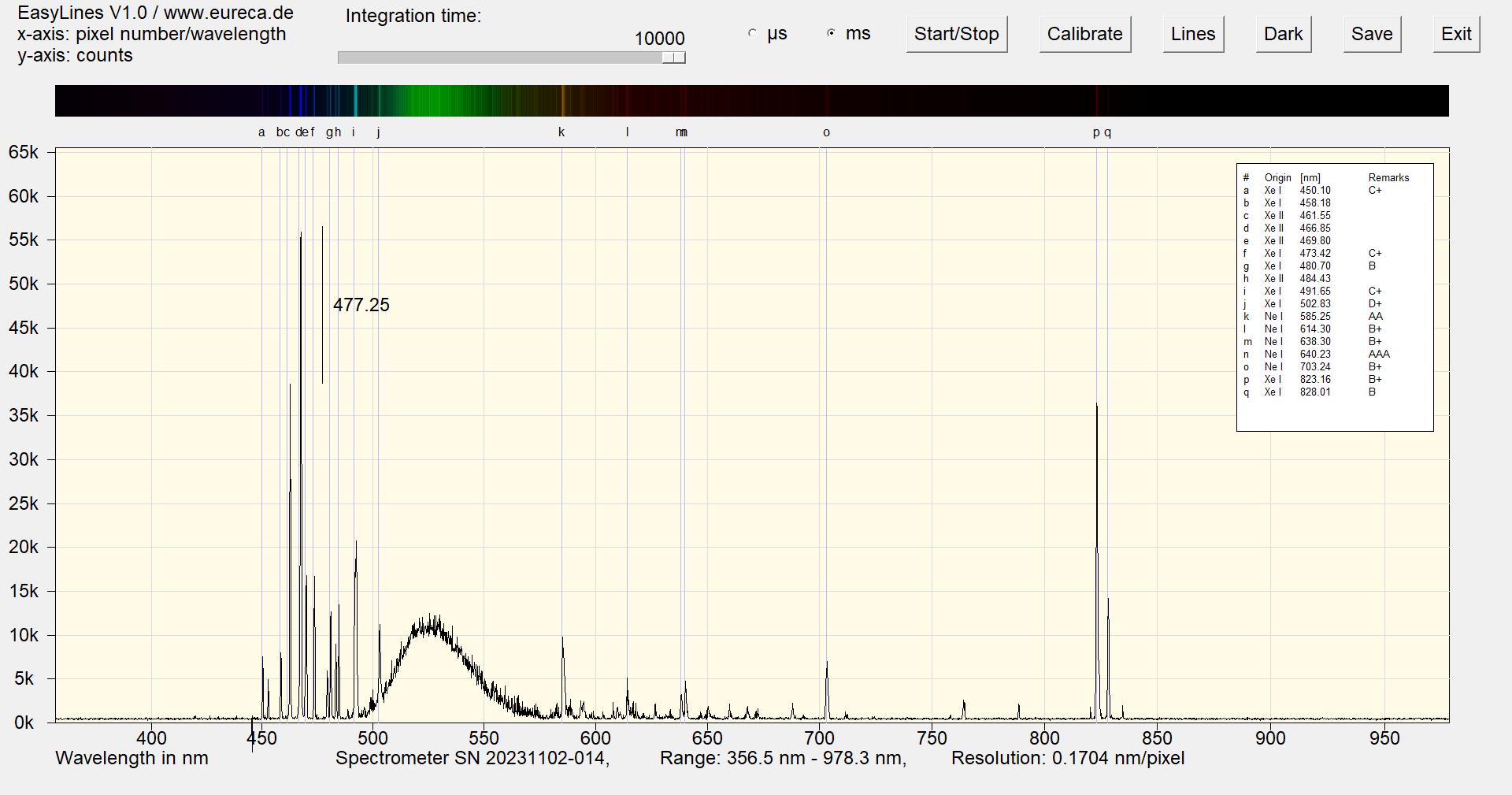
Spectrum of green discharges of a plasma globe with inserted reference values ¹
The blue color of this type of sphere is also achieved using a fluorescent phosphor. Interestingly, in addition to xenon, there is apparently also argon as a filling gas in the sphere.
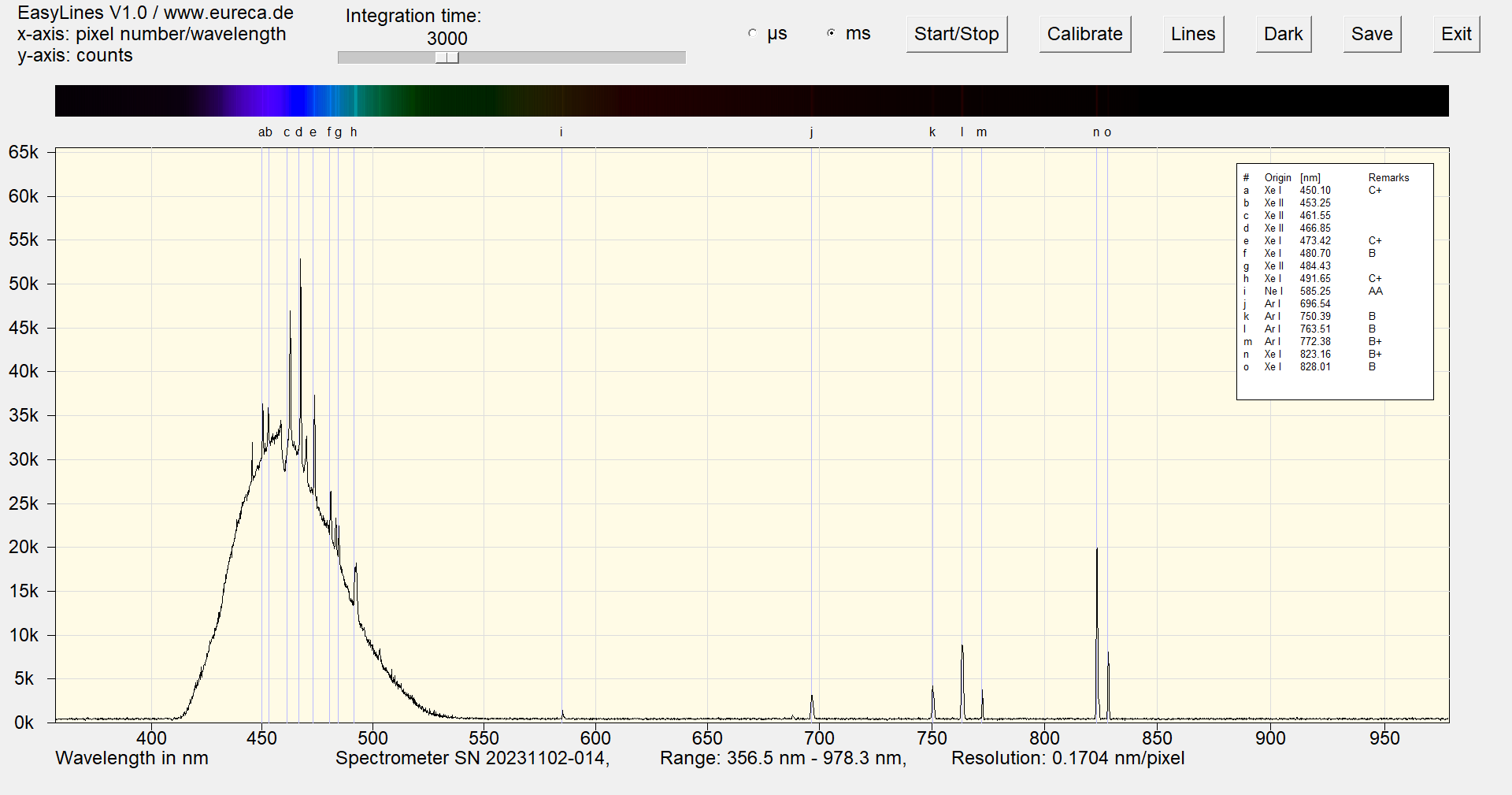
Spectrum of blue discharges of a plasma globe with inserted reference values ¹

The spectacular arcs in a plasma sphere are created when gas molecules inside are ionized – that is, electrons are separated from the atoms.These free electrons and the resulting ions conduct the current and create the visible discharge.
When you touch the sphere with your hand, you locally change the electric field within the glass sphere.The hand acts like a conductive point where the electrons particularly like to gather.This essentially "directs" the arcs toward your hand – they follow the conductive path of least resistance.
This behavior can be easily observed: If you touch the sphere at different points with several fingers, the discharges "dance" around your fingers.With a DIY spectrometer, you can even measure that the intensity of the spectral lines in these regions changes slightly because the current density increases locally.
Tip for students: This phenomenon is not only impressive to watch, it also demonstrates the basic principles of electricity, ionization, and field lines in a very vivid way.Ideal for an experiment in class or practical work.
¹ The spectra were recorded with the Czerny-Turner spectrometers from our optoelectronic consctruction kit.
The data of the superimposed emission lines are from the Atomic Spectra Database | NIST.
Kramida, A., Ralchenko, Yu., Reader, J., and NIST ASD Team (2023). NIST Atomic Spectra Database (ver. 5.11), [Online]. Available: https://physics.nist.gov/asd [2024, June 23]. National Institute of Standards and Technology, Gaithersburg, MD. DOI: https://doi.org/10.18434/T4W30F
 Would you like to replicate the experiment—in your laboratory or teaching environment? Feel free to contact us—we will assist you with planning, setup, calibration, and selecting the right components. Eureca offers advice based on many years of expertise in optoelectronics, optics and spectroscopy—from DIY setups to OEM solutions. Feedback is expressly welcome: Please share your experiences, results, or suggestions for improvement with us.
Would you like to replicate the experiment—in your laboratory or teaching environment? Feel free to contact us—we will assist you with planning, setup, calibration, and selecting the right components. Eureca offers advice based on many years of expertise in optoelectronics, optics and spectroscopy—from DIY setups to OEM solutions. Feedback is expressly welcome: Please share your experiences, results, or suggestions for improvement with us.
Here you can easily ask a question or inquiry about our products:
Last update: 2025-30-10
